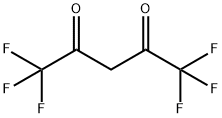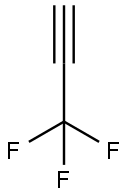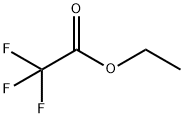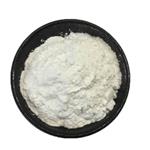
HEXAFLUOROACETYLACETONE
- Product NameHEXAFLUOROACETYLACETONE
- CAS1522-22-1
- CBNumberCB8188414
- MFC5H2F6O2
- MW208.06
- EINECS216-191-0
- MDL NumberMFCD00000426
- MOL File1522-22-1.mol
- MSDS FileSDS
Chemical Properties
| Boiling point | 70-71 °C (lit.) |
| Density | 1.47 g/mL at 25 °C (lit.) |
| refractive index | n |
| Flash point | 32 °C |
| storage temp. | Inert atmosphere,Room Temperature |
| form | Liquid |
| pka | 4.30±0.10(Predicted) |
| Specific Gravity | 1.470 |
| color | Clear colorless to slightly yellow |
| Water Solubility | Not miscible in water. |
| Sensitive | Hygroscopic |
| BRN | 1790138 |
| InChIKey | QAMFBRUWYYMMGJ-UHFFFAOYSA-N |
| CAS DataBase Reference | 1522-22-1(CAS DataBase Reference) |
| FDA UNII | MG8477QRV4 |
| EPA Substance Registry System | 2,4-Pentanedione, 1,1,1,5,5,5-hexafluoro- (1522-22-1) |
| UNSPSC Code | 12352100 |
| NACRES | NA.22 |
Safety
| Symbol(GHS) |
  
|
|||||||||
| Signal word | Danger | |||||||||
| Hazard statements | H226-H302+H312+H332-H314 | |||||||||
| Precautionary statements | P210-P280-P301+P312-P303+P361+P353-P304+P340+P310-P305+P351+P338 | |||||||||
| Hazard Codes | C,F,Xi | |||||||||
| Risk Statements | 10-20/21/22-34 | |||||||||
| Safety Statements | 26-36/37/39-45 | |||||||||
| RIDADR | UN 2920 8/PG 2 | |||||||||
| WGK Germany | 3 | |||||||||
| F | 3 | |||||||||
| Hazard Note | Flammable/Corrosive | |||||||||
| TSCA | T | |||||||||
| HazardClass | 8 | |||||||||
| PackingGroup | II | |||||||||
| HS Code | 29147000 | |||||||||
| NFPA 704: |
|




